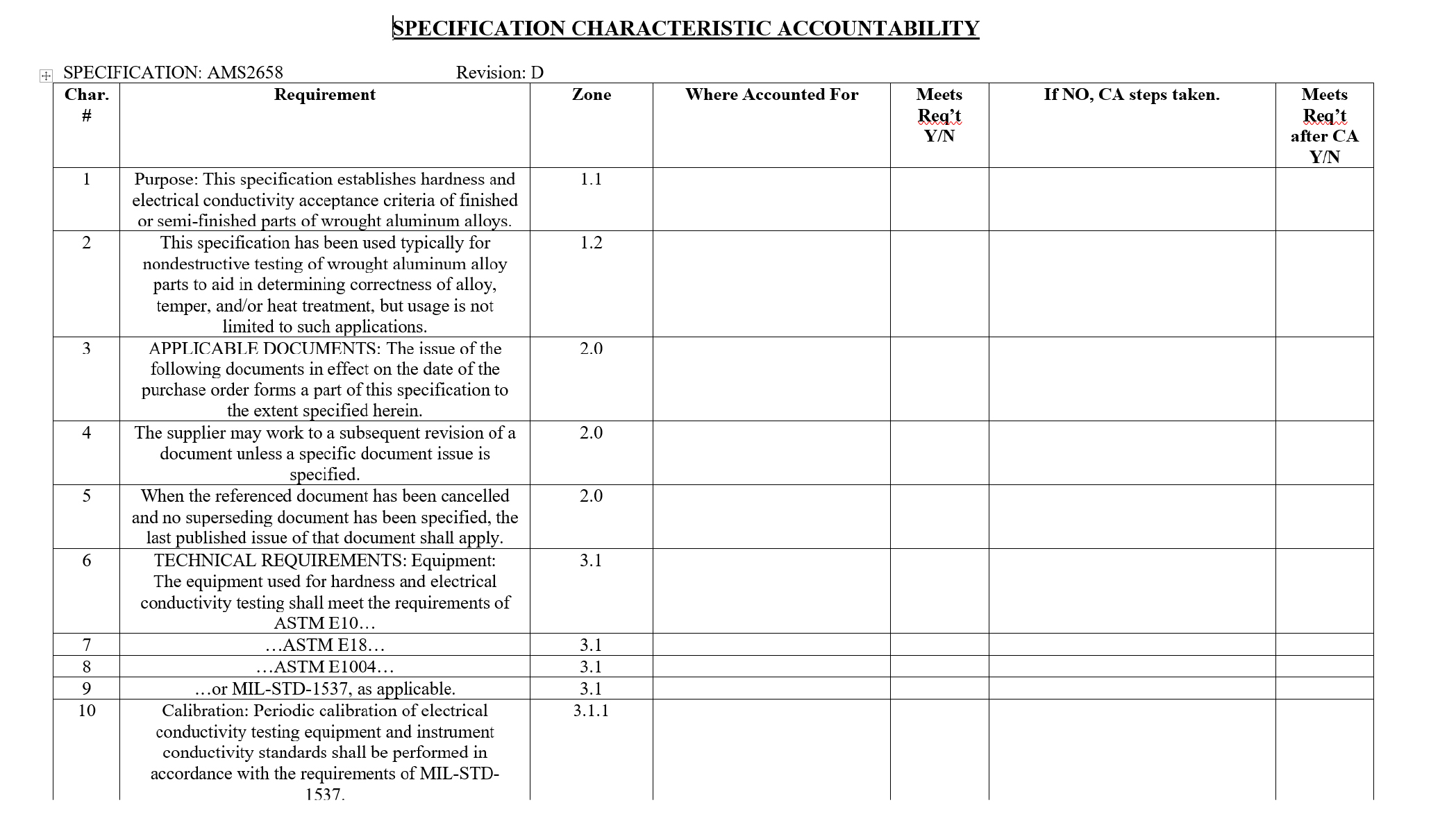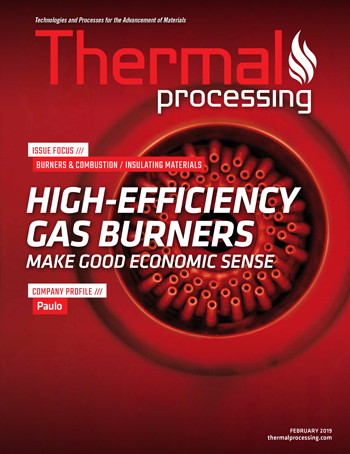
Verification of compliance is two-fold; witnessing operations being performed in accordance with internal procedures. As long as procedures are followed, the challenge in conformance is ensuring the internal procedures clearly account for all requirements set forth. In this article we will explore ways to ensure you are able to not only capture all of the requirements, but state them clearly and unambiguously within your procedures.
Capturing Requirements
Of course, industry and prime specifications comprehension is imperative. It would be a daunting task to attempt to capture specification requirements if you’re not able to comprehend the specification itself. There are many training programs out there. Some may be designed by individuals (such as my own courses I present), and others are designed by industry organizations such as eQuaLearn, ASM International and AMS/SAE.
The next step is capturing the requirements within specifications. If this is done a specific way, you will enable yourself to not only capture the requirements but also have somewhat of an audit document for future use and reference.
Once you are familiar with the specifications, your next step is to recognize and capture the specific requirements. It’s important to recognize that, at times, you may have several requirements within a single paragraph, even within a single sentence. As an example, AWS C3.6M/C3.6:2016, para 5.2.1 states
“All brazing furnaces shall have automatic temperature control and recording devices in good working order capable of controlling the temperature profile of the furnace to the requirements of this specification. Furnaces shall have adequate capacity to accomplish uniform heating of the load at the rate required to prevent both unacceptable thermal distortion of the assemblies and liquation of the brazing filler metal. The furnace and associated equipment shall be properly maintained in good working order.”
When each requirement stated within this paragraph is broken out, it should be as follows:
1. All brazing furnaces shall have automatic temperature control…
2. … and recording devices in good working order …
3. … capable of controlling the temperature profile of the furnace to the requirements of this specification.
4. Furnaces shall have adequate capacity to accomplish uniform heating of the load …
5. …. at the rate required …
6. … to prevent both unacceptable thermal distortion of the assemblies…
7. … and liquation of the brazing filler metal.
8. The furnace and associated equipment shall be properly maintained in good working order.
Using this type of method, you can separate each requirement from a paragraph to stand alone and, when the time comes, account for it by stating what procedure and paragraph it is located in.
When separating requirements from the paragraphs it may be, at first, difficult to differentiate. As time goes on you will get familiar with how and when to separate the requirements. During this part of the process you will also gain a better understanding of the requirements within the specification.
Including Requirements Within a Procedure
Once the requirements have been separated and documented on a characteristic accountability form you will then need to slowly go through each requirement and determine, first, which items are not necessarily requirements but items that merely need to be acknowledged in some way. As an example, AMS2750E paragraph 3.1.1.1 states “Unless specifically noted, requirements apply to all temperature sensor materials.” This is not necessarily a straight requirement that you can show evidence of conformance against. Although, even though it is not a requirement, it is not omitted from the characteristic accountability form, as nothing should be left out. Figure 1 shows how this may look on a characteristic accountability form.


The characteristic accountability form should be arranged in such a way that you are able to identify responses to each requirement and, if it is found to be non-conforming, you’re able to show what was done to account for it. Figure 2 is an example of this.
With this type of format, the characteristic accountability form may be used as an auditing tool as well. It can also be used to account for specification revisions when they occur.
Summary
Developing characteristic accountability forms for each specification is time-consuming. But, in the end, it is worth the time as you gain a valuable tool to ensure conformance.


























